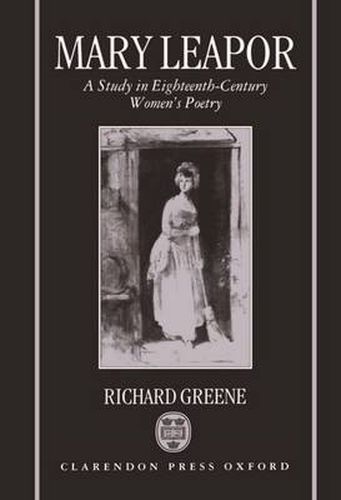Readings Newsletter
Become a Readings Member to make your shopping experience even easier.
Sign in or sign up for free!
You’re not far away from qualifying for FREE standard shipping within Australia
You’ve qualified for FREE standard shipping within Australia
The cart is loading…






Mary Leapor (1722-1746), a Northamptonshire kitchen maid, produced a substantial body of exceptional poetry which was only published after her early death at the age of twenty-four. This is a timely examination of the work of a poet who has remained almost forgotten for 200 years. Leapor is one of many gifted poets, mainly women and labourers, whose work stands outside the traditional canon of eighteenth-century verse. Richard Greene draws on extensive primary research to present substantial new information about Leapor’s life. He discusses her protests against the injustices suffered by women and the poor, her attempts to gain an education, and the influence that illness and the expectation of an early death had upon her writing. Throughout, Leapor is seen in relation to both the mainstream poets of her time and to those whom literary history has considned to obscurity. Mary Leapor: A Study in Eighteenth-Century Women’s Poetry thus provides insight not only into the work of a single neglected woman poet, but offers a sometimes surprising perspective on the literary history of the Ages of Pope and Johnson .
$9.00 standard shipping within Australia
FREE standard shipping within Australia for orders over $100.00
Express & International shipping calculated at checkout
Mary Leapor (1722-1746), a Northamptonshire kitchen maid, produced a substantial body of exceptional poetry which was only published after her early death at the age of twenty-four. This is a timely examination of the work of a poet who has remained almost forgotten for 200 years. Leapor is one of many gifted poets, mainly women and labourers, whose work stands outside the traditional canon of eighteenth-century verse. Richard Greene draws on extensive primary research to present substantial new information about Leapor’s life. He discusses her protests against the injustices suffered by women and the poor, her attempts to gain an education, and the influence that illness and the expectation of an early death had upon her writing. Throughout, Leapor is seen in relation to both the mainstream poets of her time and to those whom literary history has considned to obscurity. Mary Leapor: A Study in Eighteenth-Century Women’s Poetry thus provides insight not only into the work of a single neglected woman poet, but offers a sometimes surprising perspective on the literary history of the Ages of Pope and Johnson .